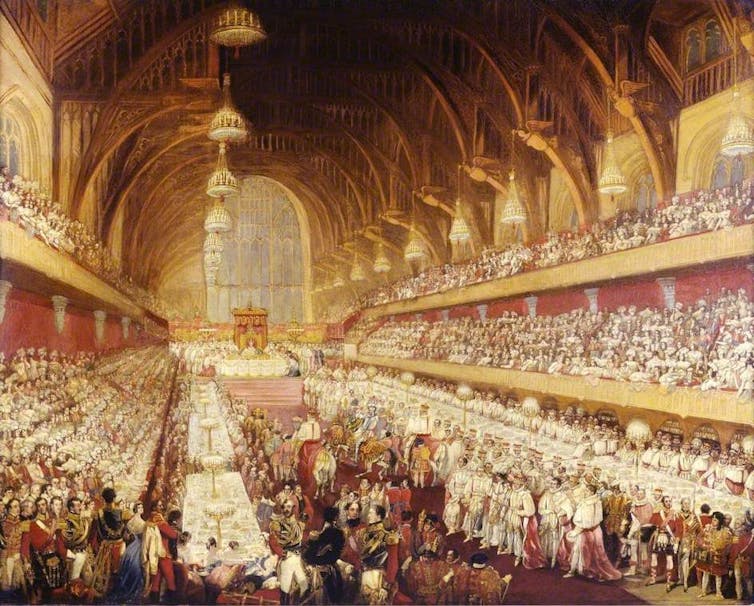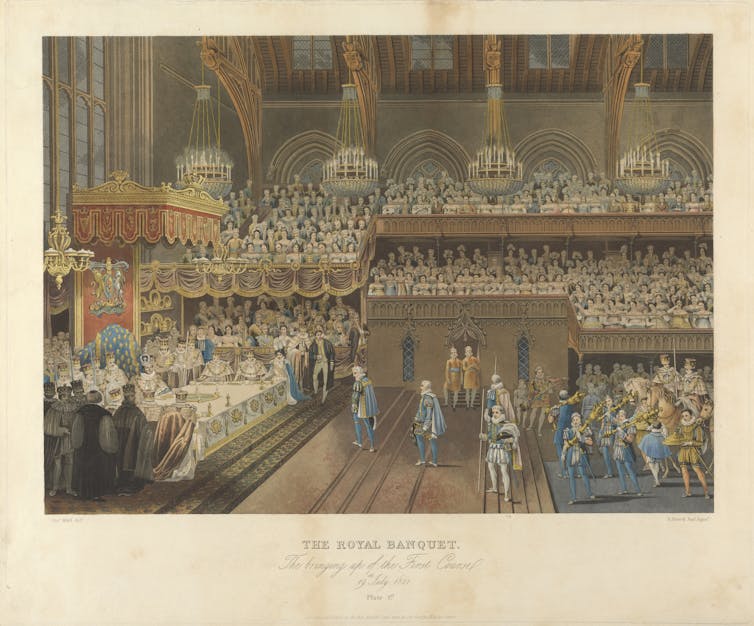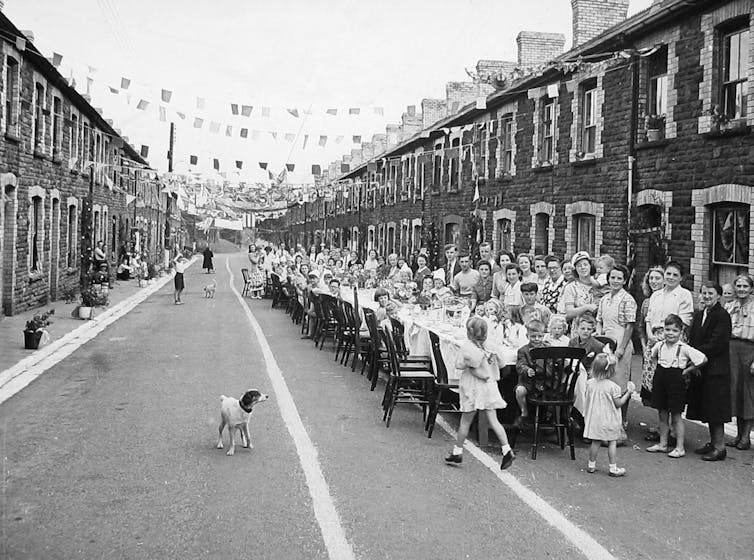King Charles III and Queen Camilla have announced a quiche as the official coronation dish. Devised by a Buckingham Palace chef, the idea is that people will cook it at home, as part of a Coronation Big Lunch, a nationwide and indeed international feast.
The recipe features a traditional shortcrust pastry with added lard, encasing a cream-and-egg filling of spinach, broad beans and cheddar, spiked with tarragon. Like Queen Elizabeth’s 1953 coronation chicken, it reveals much about the inevitability of multiculturalism in the kitchen. The message of any British coronation is arguably that we should celebrate Britishness. The question, then, is what a French staple is doing at the centre of the table.
Perhaps, like George V’s 1927 empire Christmas pudding, itself devised by a French chef, the quiche is meant to tell us something about who we are. But messages can get lost over time. The Christmas pudding was meant to show the greatness of belonging to the British empire, but is now more likely to remind people of the violence at its heart.

This piece is part of our coverage of King Charles III’s coronation. The first coronation of a British monarch since 1953 comes at a time of reckoning for the monarchy, the royal family and the Commonwealth.
For more royal analysis, revisit our coverage of Queen Elizabeth II’s Platinum jubilee and her death in September 2022.
Significant moments, like the crowning of a new monarch, are revealed through the meals served to celebrate the big occasion. King Charles III is reportedly going for a shorter, simpler ceremony than his mother did in 1953. Charles is not the first king to try to impose moderation on royal ceremonies.
French culinary influence
From 1189 until 1830, when William IV decided it was an unnecessary extravagance, new monarchs in England were feted with a coronation banquet. George IV, whom William succeeded, was well known for his love of rich French foods. So it is no surprise that his turned out to be the banquet to end all banquets.
On July 19 1821, 1,634 diners convened around 47 tables laid in Westminster Hall for a mid-afternoon feast. A hand-written ledger gives us a glimpse of all the hundreds of dishes served, to the tune of a reported £250,000 (equivalent to £27 million in today’s money).

At the top table sat the new king and six male members of the royal family. The first course was made up of 20 dishes including les filets de poulards, sautés aux champignons (chicken sautéed with mushrooms), les cotelles d’agneau, panées, grillées, sauce poivrade (breaded, grilled lamb chops in a pepper sauce), and le paté chaud de caille à l’espagnole (a quail pie, served hot).
Two courses followed, with even more dishes: 22 and 31, respectively. The meal included sole cooked in champagne, turtle soup, a spun sugar vase filled with meringues and a pastry temple. And it was topped off with ices, biscuits and fresh fruit – melons, grapefruits, plums and nectarines.
Any cultural animosity that persists between the British and the French is held with much greater ambivalence in the kitchen than elsewhere. Fine dining in Britain has long been influenced by new trends from across the channel. When George IV employed the most celebrated chef of his day, Antonin Carême, to cook in his London and Brighton homes in 1816, Carême observed that much of Britain’s diet was, in fact, French.

In opting for a French dish, Charles thus follows in the footsteps of his forebears. George V’s English Christmas pudding was devised by a French chef. And Elizabeth II’s menu for her coronation lunch, much like that for George IV’s coronation banquet, was written almost entirely in French, though it told a British story.
A British story
Elizabeth’s 1953 lunch, like George IV’s banquet, began with a turtle soup, which Carême had declared to be Britain’s national soup. He was right. The soup took pride of place at banquet tables throughout the 18th and 19th centuries. But it only existed because of Britain’s exploitation of overseas colonies. It thus tells the nation’s violent colonial history, whether or not this was the intended message of those who composed Elizabeth’s menu.
The soup was followed by a fish course which had been given the name of delices de soles Prince Charles, after the heir, thereby signalling the continuity and stability of the monarchy. Lamb cooked à la Windsor followed, along with green beans, asparagus, and later strawberries, all presumably locally grown.

Locally grown food was also a great passion of an earlier monarch: George III. Though most often portrayed in popular culture as “mad King George” (he did suffer from mental illness), in his lifetime he was known as “Farmer George”. He wrote articles on agriculture using the pen name Ralph Robinson.
Contrary to his son George IV’s predilection for rich French cuisine, George III preferred more typically British flavours – fruit tarts and simple dishes of egg and spinach. But even here, Britain’s food story had European inflections.
The ledgers in which a daily record was kept of the king’s dinners interspersed French and English words to describe dishes of roast meat, ragouts and puddings. Since the British king was also the Elector of Hannover, and his wife, Queen Charlotte, a German princess, there are hints of German eating in the royal ledgers too. When it comes to food choices, flavours and cooking techniques, Britain was, and remains, part of Europe.

Charles III shares George’s passion for agriculture. He is well known for his environmentalism and his commitment to organic farming. Along with the quiche recipe, people wishing to host their own coronation lunch can download recipes for Ken Hom’s coronation roast rack of lamb with Asian-style marinade, and Nadia Hussain’s coronation aubergine.
Britain’s love of curry was the key flavour in the coronation chicken dish invented by Rosemary Hume and Constance Spry at Le Cordon Bleu London for Elizabeth in 1953. These flavours are mirrored in Hussain’s recipe, which, she writes, is based both on her own mother’s cooking and what she makes for her children.
Charles’s choices might be intended to recognise the multiculturalism of Britain today. But they are also a reminder of the difficult legacy of empire. The stories we tell about ourselves through our food weave together the things we want to say, and the things we cannot help but reveal.

